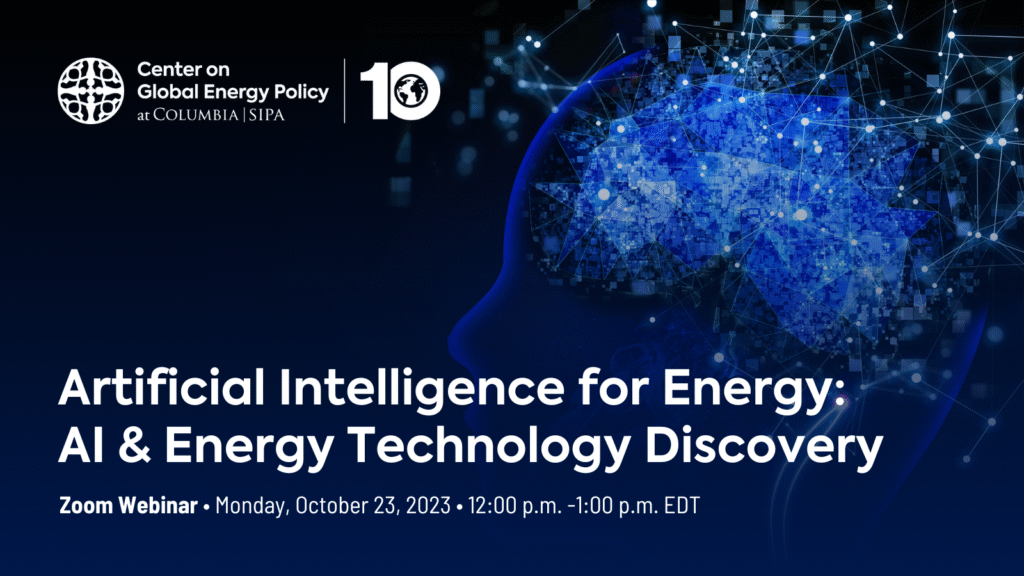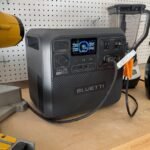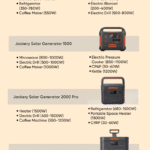Disclosure: This post contains affiliate links and I will be compensated if you make a purchase after clicking through my links. Learn More
Inverter generators are a unique type of portable power source that have become increasingly popular in recent years. Unlike traditional generators, inverter generators use advanced technology to provide clean, reliable electricity for a wide range of applications. Whether you’re looking to power your RV, run sensitive electronics at a job site, or have a backup power source for your home, understanding how inverter generators work can help you determine if this type of generator is the right choice for your needs.
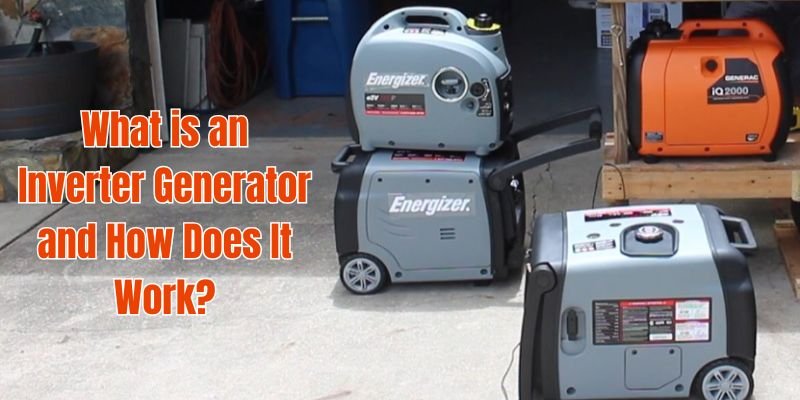
What is an Inverter Generator?
An inverter generator is a type of electrical generator that produces alternating current (AC) electricity, but with some key differences from a standard generator. At the core of an inverter generator is a combination of an engine, an alternator, and an inverter.
The engine in an inverter generator converts mechanical energy into electrical energy through the alternator. However, unlike a traditional generator that produces raw AC power directly from the alternator, an inverter generator first converts the output to direct current (DC) power, then uses an inverter to convert it back to AC power.
This process of converting the power from mechanical to electrical and then back to AC provides several benefits compared to a standard generator:
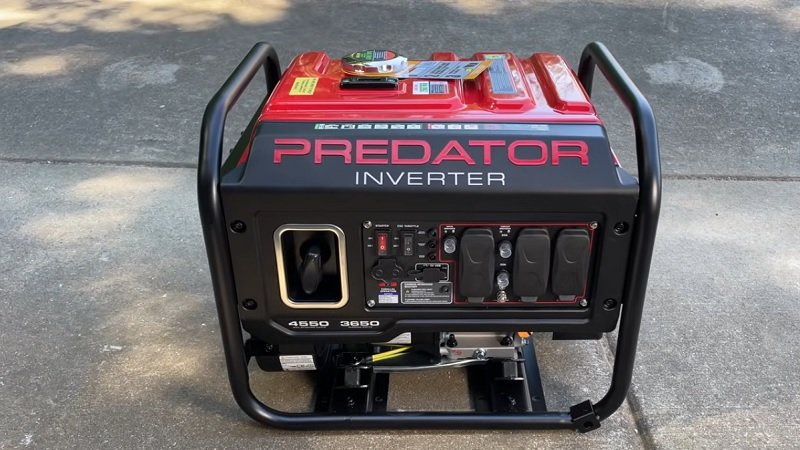
Key Benefits of Inverter Generators
Clean, Stable Power Output
The inverter in an inverter generator produces a pure sine wave electrical output, which is cleaner and more stable than the power produced by a conventional generator. This makes inverter generators well-suited for powering sensitive electronics and appliances.
Improved Fuel Efficiency
Inverter generators are able to adjust their engine speed based on the power demand. This allows them to use only the amount of fuel needed to meet the current electrical load, resulting in better fuel efficiency compared to traditional generators that run at a constant speed.
Quieter Operation
The ability to adjust engine speed also allows inverter generators to operate much more quietly than their traditional counterparts. This makes them well-suited for use in noise-sensitive environments like campgrounds or job sites near residential areas.
Parallel Capability
Many inverter generator models can be connected in parallel, allowing users to increase the total available power output by linking multiple units together. This provides greater flexibility and scalability to meet varying power needs.
Lightweight and Portable
Inverter generators are generally more compact and lightweight than traditional generators of similar power output. This makes them easier to transport and set up, a key benefit for activities like camping, tailgating, or powering small job sites.
Durability and Reliability
Inverter generators are designed with high-quality components and advanced technology to deliver reliable performance over extended periods of use. Many models are also built to withstand the rigors of outdoor use, with features like weather-resistant enclosures.
How Does an Inverter Generator Work?
To understand how an inverter generator works, it’s helpful to break down the key components and their roles in the power generation process.
Engine: The engine in an inverter generator is responsible for converting the mechanical energy from fuel combustion into rotational motion that drives the alternator.
Alternator: The alternator is a generator that converts the rotational motion from the engine into alternating current (AC) electricity. However, this raw AC power is not yet suitable for many electronic devices.
Inverter: The inverter is the key component that sets an inverter generator apart from a traditional generator. The inverter takes the AC power from the alternator and converts it to direct current (DC) power. It then uses solid-state electronics to convert the DC back into clean, stable AC power.
The process works as follows:
- The engine runs and spins the alternator, which generates raw AC power.
- This AC power is then fed into the inverter.
- Inside the inverter, the AC is first converted to DC power using rectifiers.
- The DC power is then “inverted” back into AC power, but this time it is a pure sine wave AC output.
This multi-step process of converting the power from mechanical to electrical and then back to a refined AC output is what gives inverter generators their unique advantages over traditional generators.
Applications of Inverter Generators
Inverter generators are versatile power sources that can be used in a wide range of applications. Some of the most common uses include:
Recreational Activities: Inverter generators are popular choices for powering RVs, campers, tailgate parties, and outdoor events. Their quiet operation, clean power output, and portability make them well-suited for these types of recreational activities.
Job Site Power: Inverter generators are often used on job sites to power tools, equipment, and temporary lighting. Their ability to power sensitive electronics, as well as their compact size and quiet operation, make them a practical choice for construction, landscaping, and other work environments.
Home Backup Power: Inverter generators can serve as reliable backup power sources for homes during blackouts or other power outages. Their clean power output ensures sensitive home electronics and appliances are protected, while their fuel efficiency and quiet operation make them a more convenient alternative to traditional standby generators.
Emergency Preparedness: Inverter generators are increasingly being used for emergency preparedness, allowing individuals and families to have a portable power source on hand in case of natural disasters or other emergencies that result in power grid failures.
Remote/Off-Grid Power: Inverter generators are well-suited for powering remote cabins, tiny homes, or other off-grid applications where access to the electrical grid is limited. Their ability to efficiently generate clean power makes them a practical choice for these types of installations.
Regardless of the application, inverter generators offer a combination of features and benefits that make them a popular choice for a wide range of portable power needs.
Choosing the Right Inverter Generator
When selecting an inverter generator, there are several key factors to consider to ensure you choose the right model for your specific power requirements and usage needs:
Power Output: Inverter generators come in a variety of power output ratings, typically ranging from 1,000 to 7,500 watts or more. Choosing the right power output depends on the devices and appliances you need to power, as well as any future power needs you anticipate.
Runtime: Inverter generators are designed to provide power for extended periods, with runtimes that can range from several hours to over a day on a single tank of fuel. Consider your typical power needs and how long you’ll require continuous operation.
Noise Level: One of the key benefits of inverter generators is their quiet operation. Look for models with noise ratings, typically measured in decibels (dB), that meet your needs for the intended usage environment.
Fuel Efficiency: Inverter generators are generally more fuel-efficient than traditional generators. Pay attention to the fuel efficiency ratings, which are often expressed in hours of runtime per gallon of fuel.
Parallel Capability: If you anticipate needing more power than a single inverter generator can provide, look for models that offer parallel operation capabilities, allowing you to link multiple units together.
Portability: Inverter generators are designed to be more compact and lightweight than traditional generators. Consider the size, weight, and included transportation features, such as wheels or handles, to ensure the generator can be easily moved and transported as needed.
Durability and Warranty: Inverter generators are built to withstand the rigors of outdoor use. Look for models with weather-resistant enclosures, corrosion-resistant components, and robust warranties that provide peace of mind.
By carefully evaluating these key factors, you can select the ideal inverter generator to meet your specific power needs and usage requirements, whether for recreational activities, job site applications, home backup power, or emergency preparedness.
Final Words
Inverter generators represent a significant advancement in portable power technology, offering a range of benefits over traditional generators. From their clean, stable power output and improved fuel efficiency to their quiet operation and parallel capabilities, inverter generators provide a versatile and reliable power solution for a variety of applications.
Whether you need a dependable backup power source for your home, a portable generator for your RV or campsite, or a quiet, fuel-efficient option for your job site, understanding how inverter generators work and the key features to consider can help you make an informed purchasing decision. By investing in an inverter generator, you can enjoy the convenience and peace of mind that comes with a highly capable, yet environmentally friendly, portable power solution.
FAQs
What is the difference between an inverter generator and a traditional generator?
The key difference is in how they produce power. Traditional generators create raw AC power directly from the engine and alternator. Inverter generators first convert the power to DC, then use an inverter to create clean, stable AC power. This inverter process provides benefits like improved fuel efficiency, quieter operation, and better power quality for sensitive electronics.
How do inverter generators work?
Inverter generators use a three-step process to generate power. First, the engine spins an alternator to create AC electricity. This AC power is then converted to DC by the inverter’s rectifier. Finally, the inverter uses electronic circuits to convert the DC back into high-quality AC power with a pure sine wave output.
What are the main advantages of an inverter generator?
The main advantages of inverter generators include:
1) Clean, stable power output suitable for sensitive electronics,
2) Improved fuel efficiency through variable engine speed,
3) Quieter operation compared to traditional generators, and
4) Parallel capability to increase total power output by connecting multiple units.
Can inverter generators power sensitive electronics?
Yes, inverter generators are well-suited for powering sensitive electronics. The inverter technology produces a pure sine wave electrical output, which is clean and stable enough to safely operate devices like laptops, TVs, smartphones, power tools, and other electronics without the risk of damage from voltage fluctuations or distortions.
What size inverter generator do I need?
The appropriate size inverter generator depends on your power needs. Consider the total wattage required to run the devices and appliances you plan to power simultaneously. Most inverter generators range from 1,000 to 7,500 watts, so choose a model that can handle your maximum expected load with some additional capacity for future needs.
Can an inverter generator power a refrigerator?
Yes, an inverter generator can power a refrigerator if its wattage matches the refrigerator’s requirements. Check the inverter generator’s starting and running wattage before use.


